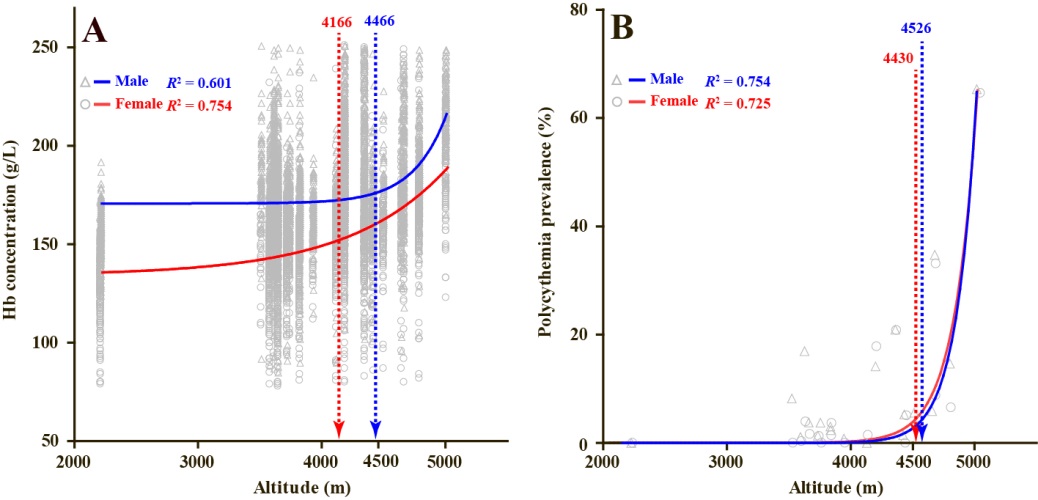Tibetans are considered well adapted to high altitude, but whether there is a limit of elevation they can adapt to the low oxygen environment has not been tested. Recently, scientists found a turning point at the elevation of 4,500m for polycythemia incidence in Tibetans. This is the first evidence showing a sharp change of physiological conditions of Tibetans who were thought to have successfully adapted to high altitude environments at the Himalayas. This study was published in American Journal of Hematology.
Tibetans have lower hemoglobin (Hb) levels compared with lowlanders moving to high altitude, which is considered a protection from overproduction of red cells (polycythemia), a condition that increases the risk of heart attack, stroke, and fetal loss during pregnancy.
SU Bing Research Group, from Kunming Institute of Zoology, has cooperated with Professor CUI Chaoying of Tibet University and Professor WU Tianyi of Qinghai Plateau Medical Laboratory more than ten years on study of high-altitude adaptation in Tibetans. Through in-depth investigation of local villages and towns, the team collected more than 9,000 blood samples, physiological and biochemical phenotypes of the Tibetan population from 20 different geographical areas with different altitudes, ranging from low altitude (Motuo, 1900 meters) to extra-high altitude (Pumajiangtang, 5018 meters).
The team then systematically analyzed the change pattern of Tibetan hemoglobin concentration in different altitudes and indicated a clear turning point at the elevation of 4,500m where the Hb level and polycythemia incidence went up dramatically. They further proposed that the elevation of 4,500m marks the altitude limit for Tibetans where the protective blunting effect on hemoglobin disappears.
ZHANG Hui (the first PhD student of Tibet University), HE Yaoxi (PhD student of KIZ) and Prof. CUI Chaoying (Professor of Tibet University) are the co-first author of this work. Dr. SU Bing (Investigator at KIZ) and Dr. QI Xuebin (Associate Investigator at KIZ) are corresponding authors.
This work was supported by grants of Project B of Chinese Academy of Sciences, National Natural Science Foundation "Microevolution" Major Research Projects and District Science Fund, Ministry of Science and Technology 973 Program, and funding of the Everest Scholars in Tibet University.

Nonlinear correlation of Hb concentration (left) and polycythemia incidence (right) with altitude in Tibetan populations. (Image by SU Bing’s Group)
